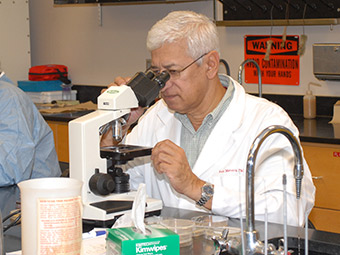Document Type
Article
Publication Date
1-2023
Abstract
Although plants possess a suite of structural defenses, most studies have focused on trichomes. Trichomes can have both pre- and post-ingestive effects and have been consistently found to reduce herbivory. Along with trichomes, a few studies have focused on epicuticular waxes as an important defense; however, manipulated comparisons examining herbivore growth and development is limited. In this study, using two Solanum species (Solanum glaucescens and Solanum macrocarpon) that vary in both defenses, we tested the hypothesis that variation in defenses will affect herbivore feeding, primarily by restricting feeding commencement. We used electron microscopy together with a series of plant- and diet-based manipulative experiments, using tobacco hornworm (Manduca sexta; Lepidoptera: Sphingidae) as the herbivore. We found that S. glaucescens leaves had significantly fewer trichomes and significantly higher wax content when compared to S. macrocarpon. We also found that S. glaucescens waxes acted as a strong physical barrier resulting in lower mass gain and higher mortality of caterpillars compared to S. macrocarpon. Artificial diet manipulation experiments also suggested the possible toxicity of waxes. Collectively, we show that epicuticular waxes can play a significant role as a strong surface barrier and should be examined further.
Recommended Citation
Watts, Sakshi, and Rupesh Kariyat. "Are epicuticular waxes a surface defense comparable to trichomes? A test using two Solanum species and a specialist herbivore." Botany 101, no. 1 (2023): 15-23. https://doi.org/10.1139/cjb-2021-0206
Publication Title
Botany
DOI
10.1139/cjb-2021-0206



Comments
Copyright the Author(s) or their Institution(s). Original published version available at https://doi.org/10.1139/cjb-2021-0206